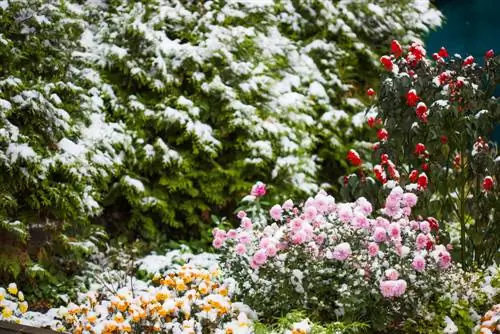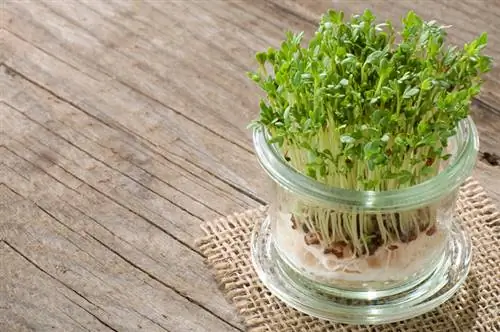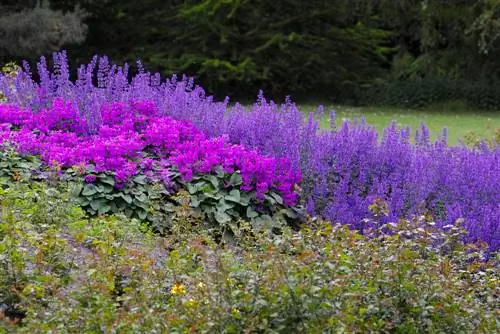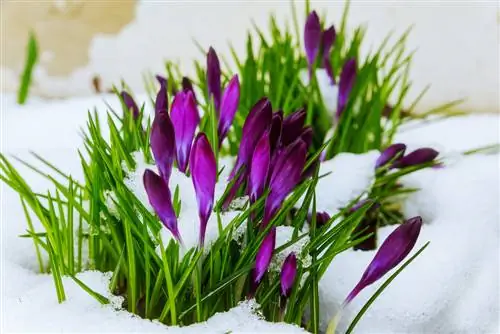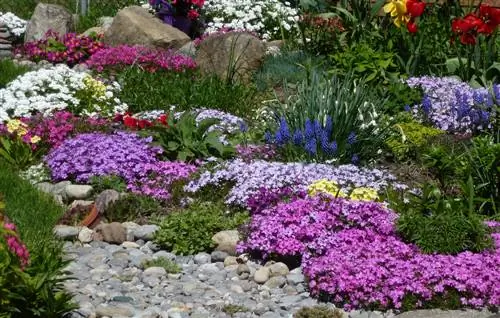- Author admin [email protected].
- Public 2023-12-16 16:46.
- Last modified 2025-01-23 11:21.
An appropriately sized flower bed can be planned so that it blooms and greens all year round. There are flowering plants for every season - even in winter. It's best to fill the gaps with evergreen shrubs and ground cover so that the bed always shows color and doesn't look boring in any season.
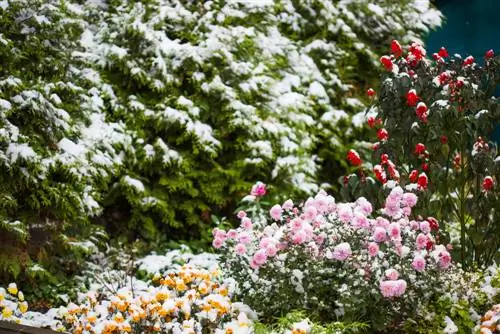
How do you create a flower bed that blooms all year round?
To make a flower bed bloom all year round, combine long-flowering perennials, bulbous flowers and various shrubs to suit the season. Incorporate evergreens for pops of color throughout.
Continuously flowering perennials as leading plants
The heart of every flower bed that blooms all year round are permanently blooming perennials. Many species bloom between June and October as long as the dead shoots are removed in good time. Steppe sage, phlox, catnip, girl's eye (Coreopsis verticillata) as well as flowering bed and shrub roses delight the eye for many months. In between, plant perennials with shorter flowering times, such as typical spring bloomers and summer flowers. This means that the bed looks splendid for a very long time without there being any big gaps in the middle. Autumn flowers and ornamental grasses complete the picture.
Flower dreams for different seasons
For every season there are typical plants that cannot be missing from a flower bed.
Spring
The flower dance opens in spring with the first spring bloomers, which often show their pretty white, pink or yellow flowers as early as March and April. Many bulb flowers belong to this group, such as tulips, daffodils, March cups, snowdrops, grape hyacinths, etc. Their bulbs must be planted in the fall of the previous year, although it is best to plant the smaller flowers in groups; taller tulips, on the other hand, can also create individual accents. In addition to the onion flowers, many shrubs also bloom early in the year: small ornamental fruit trees are wonderful as the center or edge of a flower bed and delight with their rich, white or pink flowers. Forsythia and wild fruits such as cornelian cherries also bloom profusely in spring. Their bright yellow flowers are visible from afar.
Summer
Summer belongs to the one- and two-year-old summer flowers, of which there are an almost unmanageable number. Some begin their flowering period in May, while others only start in June or July. Choose the colors carefully and limit yourself to three different shades if possible - otherwise small beds in particular will quickly appear overloaded. Snapdragons, elfin spurs, foxgloves, nasturtiums, cup mallow, pansies, hollyhocks, decorative baskets or marigolds (Tagetes) have a fairly long flowering period and thrive in most locations.
Autumn
You can extend the flowering season with late-blooming autumn perennials: goldenrod, various asters, yellow coneflower, perennial sunflower, Indian nettle, coneflower, waterdost, candleweed, autumn anemone, yarrow (available not only in white, but also in yellow, Red and pink), prairie candle, sedum, monkshood and chrysanthemums often start their flowering period in summer and bloom tirelessly until the first frost.
Winter
Even between the beginning of December and February there are still winter-flowering species that provide delicate splashes of color in the gray winter landscape. Christmas rose, winter viburnum, winter jasmine, snow heather and witch hazel, together with evergreen plants, make the flower bed look attractive even in the cold season.
Tip
So that the flowerbed looks lush at any time of the year, several types of plants should always be blooming. You can achieve this by including all plant groups and, in addition to perennials, also integrating dwarf and ornamental shrubs as well as bulbous and bulbous flowers.

